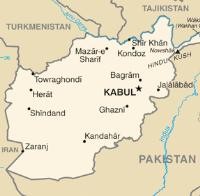MAZAR-I-SHARIF, Afghanistan -- The kinds of tourists you meet in Afghanistan are not quite the same as those you'd be likely to meet on the Costa del Sol. First of all, there are fewer of them, far fewer -- perhaps only a few hundred a year. But if it can be said that Costa del Sol tourists share at least one trait in common (a love of the sun), today's visitors to Afghanistan share something else: curiosity, perhaps with a dash of recklessness. While post-invasion Afghanistan has never descended into the kinds of violence and anarchy seen in Iraq, it is by no means a safe place to visit. In recent months, the country has seen a tangible resurgence of the Taliban, which has been striking out from its strongholds along the border with Pakistan, bringing casualty numbers to their highest levels since the 2001 invasion. Yet a visit to the country makes it clear that today, there are two Afghanistans: one at war, particularly in the southern provinces of Helmand and Kandahar, and another at peace, with levels of stability that vary from the jittery and paranoid Kabul to the carefree city of Mazar-i-Sharif in the north, where I spent most of my time during a reporting trip in May. I stayed at the Barat hotel (one of two in the city, I was told), where I had an entire floor to myself, as did each of the six other guests. The hotel overlooks Mazar's signature Blue Mosque, a sprawling complex of pools, green areas and zones of prayer that becomes a bustling confluence of Mazar life every evening. The sunsets are sublime, with the dying rays catching the thousands of white doves, the splash of children playing in the fountains, the flowing movement of burqas and the wisps of smoke from men gathered to chat. The tourists I met told me they'd come to see what Afghanistan was like behind the headlines they had read in the West. But others had come with a mission. One woman I met from Switzerland had come to understand the plight of Afghanistan's disabled. She herself was in a wheelchair and had made the journey to see how a country with an estimated 10 percent of its population disabled by war and disease is dealing with the problem. The answer she found: not very well.
A Tale of Two Countries: Tourism in Afghanistan

